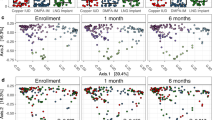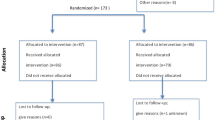Abstract
THE mechanisms whereby intrauterine contraceptive devices (IUDs) exert their anti-fertility effects remains unestablished1. The involvement of prostaglandins (PGs) is being investigated2–5, although alternative mechanisms have been proposed (for example, phagocytic and other actions of macrophages6,7). Although the relative contributions of macrophages and PGs to the anti-fertility actions of IUDs remains uncertain, it is clear that introduction of the IUD into the endometrial cavity results in an infiltration by neutrophils and macrophages8 as well as increased PG levels in uterine venous blood in animals9,10. While investigating the role of mediators of chronic inflammation we have demonstrated that the macrophage is a potent source of PGE11, and since the macrophage is the predominant cell adhering to the IUD6 we have considered the possibility that such cells act as a source of PGs.
This is a preview of subscription content, access via your institution
Access options
Subscribe to this journal
Receive 51 print issues and online access
$199.00 per year
only $3.90 per issue
Buy this article
- Purchase on Springer Link
- Instant access to full article PDF
Prices may be subject to local taxes which are calculated during checkout
Similar content being viewed by others
References
Thompson, I. E., Obstet. Gynec., 42, 617 (1973).
Kirton, K. T., Phariss, B. B., and Forbes, A. D., Proc. exp. Biol. Med., 133, 314 (1970).
McCracken, J. A., Ann. N. Y. Acad. Sci., 180, 456 (1971).
Powell, W. S., Hammerström, S., Samuelsson, B., and Stöberg, B., Lancet, i, 1120 (1974).
Batta, S. K., and Martini, L., Prostaglandins, 6, 329 (1974).
Saǧiroǧlu, N., and Saǧiroǧlu, E., Am. J. Obstet. Gynec., 106, 506 (1970).
Moyer, D. L., and Mishell, D. R., Am. J. Obstet. Gynec., III, 66 (1971).
Tatum, H. J., Am. J. Obstet. Gynec., 112, 1000 (1972).
Poyser, N. L., Horton, E. W., and Thompson, C. J., Nature, 230, 526 (1971).
Spilman, C. H., and Duby, R. T., Prostaglandins, 2, 159 (1972).
Bray, M. A., Gordon, D., and Morley, J., Br. J. Pharmac., 52, 453P (1974).
Brummer, H. C., Prostaglandins, 2, 185 (1972).
Lee, R. E., and Lands, W. E. M., Biochim. biophys. Acta, 260, 203 (1972).
Nugteren, D. H., Beerthuis, R. K., and Dorp, D. A. van, Rec. Trav. Chim. Pays-Bas, 85, 405 (1966).
Vernon-Roberts, B., Int. Rev. Cytol., 25, 131 (1969).
Zurier, R. B., Proc. Second int. Conf. Prostaglandins (edit. by Samuelsson, B., and Paoletti, R.), (in the press).
Higgs, G. A., and Youlten, L. J. F., Br. J. Pharmac., 44, 330P (1972).
Morley, J., Bray, M. A., Gordon, D., and Paul, W., in Immunological Basis of Connective Tissue Disorders: fifth Lepetit Colloquium (edit. by Silvestri, L. G.), 129 (North Holland, Amsterdam, 1975).
Blatchley, F. R., Donovan, B. J., Horton, E. W., and Poyser, N. L., J. Physiol., Lond., 223, 69 (1972).
Author information
Authors and Affiliations
Rights and permissions
About this article
Cite this article
MYATT, L., BRAY, M., GORDON, D. et al. Macrophages on intrauterine contraceptive devices produce prostaglandins. Nature 257, 227–228 (1975). https://doi.org/10.1038/257227a0
Received:
Accepted:
Issue Date:
DOI: https://doi.org/10.1038/257227a0
This article is cited by
-
Dynamic changes of myometrial activity, levels of PGF2α and E2 in rabbits after insertion of four types of IUDs
Advances in Contraception (1991)
-
Role of plasminogen activators and leukocytes in IUD-induced inflammation: effect of some anti-inflammatory agents
Advances in Contraception (1989)
-
Studies on IUD-induced menorrhagia and increased synthesis of prostacyclin in endometrium
Journal of Tongji Medical University (1988)
-
Immunostimulation
Klinische Wochenschrift (1984)
Comments
By submitting a comment you agree to abide by our Terms and Community Guidelines. If you find something abusive or that does not comply with our terms or guidelines please flag it as inappropriate.



